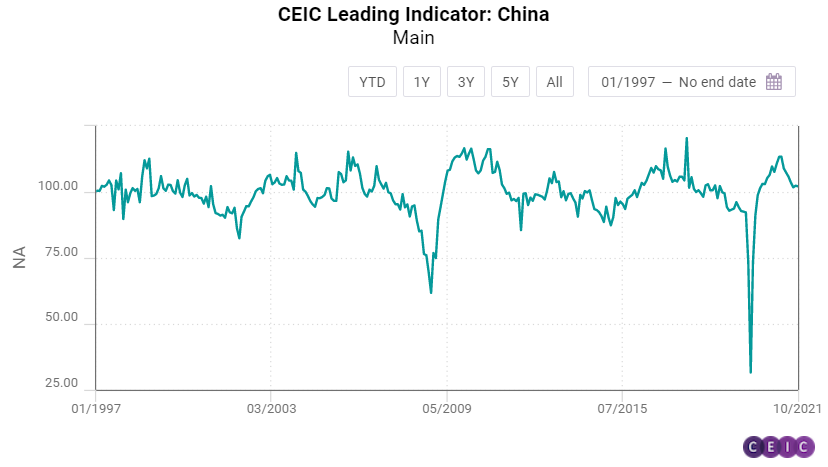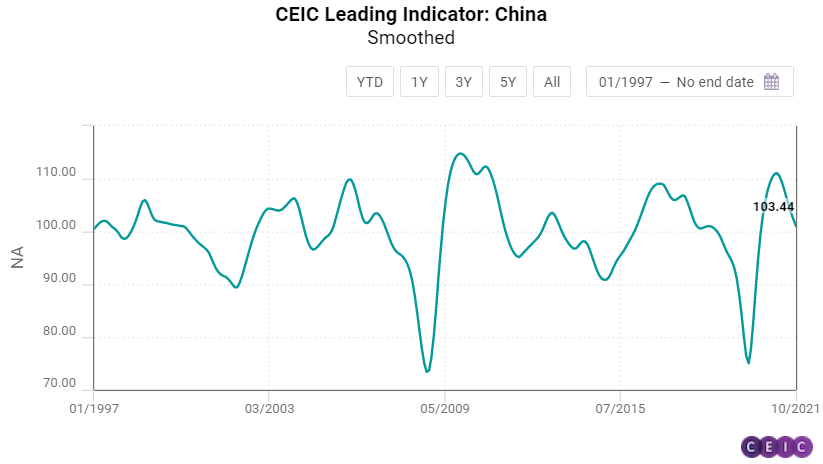-png.png)
The CEIC Leading Indicator is a proprietary dataset designed by CEIC Insights to precede the development of major macroeconomic indicators and predict the turning points of the economic cycle for key markets. It is a composite leading indicator that is calculated by aggregating and weighting selected leading indicators covering various important sectors of the economy, such as financial markets, the monetary sector, labour market, trade, and industry. It is developed through a proprietary CEIC methodology and employs data from the CEIC database. The CEIC Leading Indicator currently covers eight regions – Brazil, China, India, Indonesia, Russia, the Euro Area, Japan, and the United States.
The CEIC Leading Indicator for China, which anticipates turning points of the business cycle, dropped slightly to 102.11 in October from 102.37 in the previous month. The Chinese economy is still performing above its long-term average but the economic expansion may slow down in the rest of the year as well as Q1 2022.

China’s official manufacturing PMI, stayed below the 50-threshold for the second month in a row at 49.2, as manufacturers struggled with the surging raw material costs and ongoing power shortages. As the high base effect from last year has faded, automobile production declined by 8.7% y/y in October. However, automobile production has been on an upward trend since August. In October, a total of 2.3mn cars were produced, higher than the 2.1mn in September. Growth of money supply M2 accelerated, increasing by 8.67% y/y in October from 8.26% in the previous month. The expansion of financial institution deposits also accelerated to 9.14% y/y from 8.58% y/y in September. Affected by tighter regulations, China’s real estate sector continued to cool down, as floor space sold of commodity buildings in the period January-October 2021 increased by 7.31% y/y compared to 11.33% y/y growth in the period January-September 2021.

The smoothed CEIC Leading Indicator has been on a downward trend since February 2021. In October, it declined further to 101.02. Although retail sales data slightly improved in October, weak domestic consumption continued to be a concern for China's economic outlook in Q4 2021 as well as Q1 2022.
Keep informed each month on the predicted turning points of the economic cycle for key markets with our free, proprietary CEIC Leading Indicator. Learn more and register here
.png?width=160&name=ceic-logo-Vector%20logo%20no%20tagline%20(002).png)
